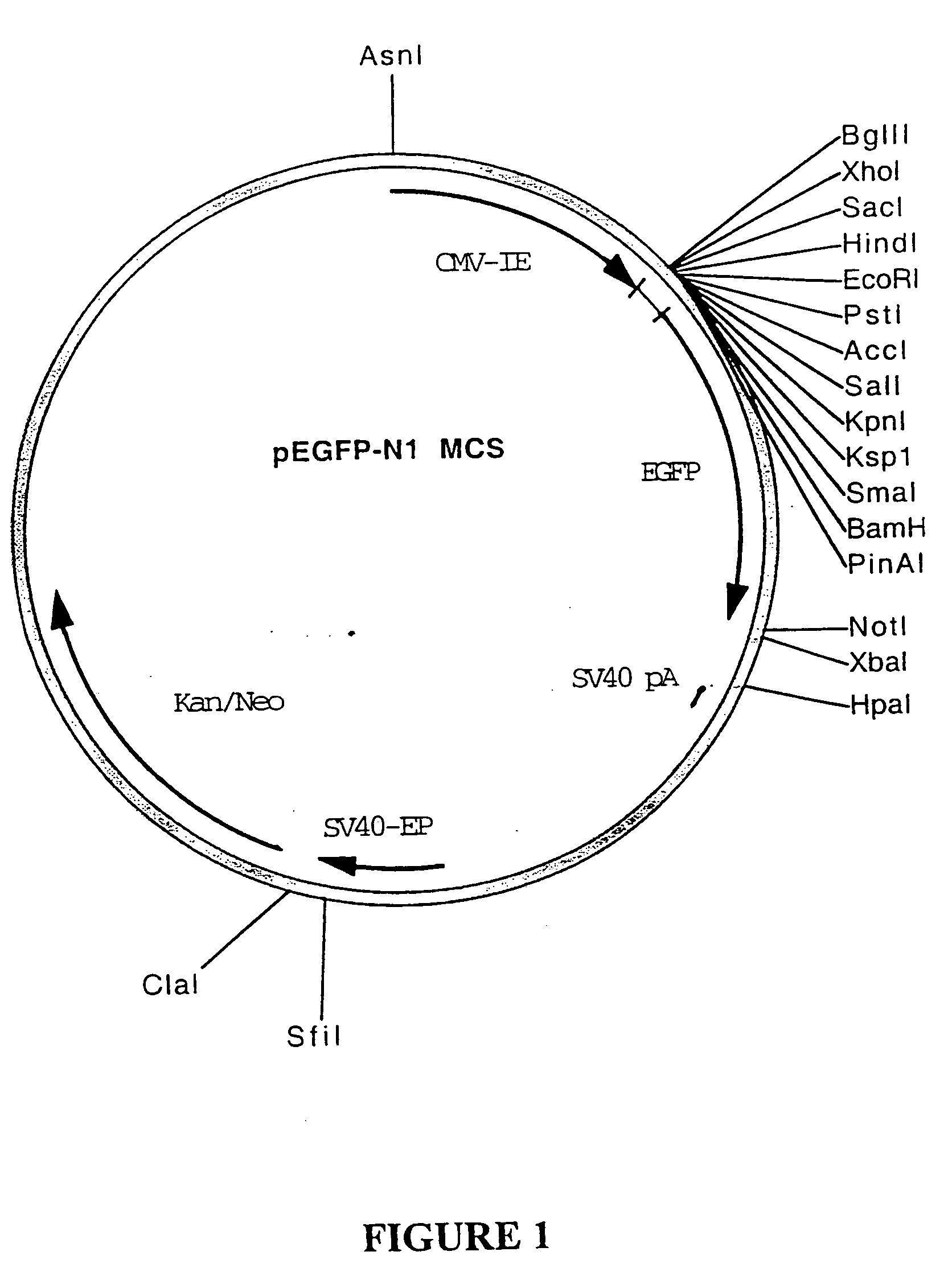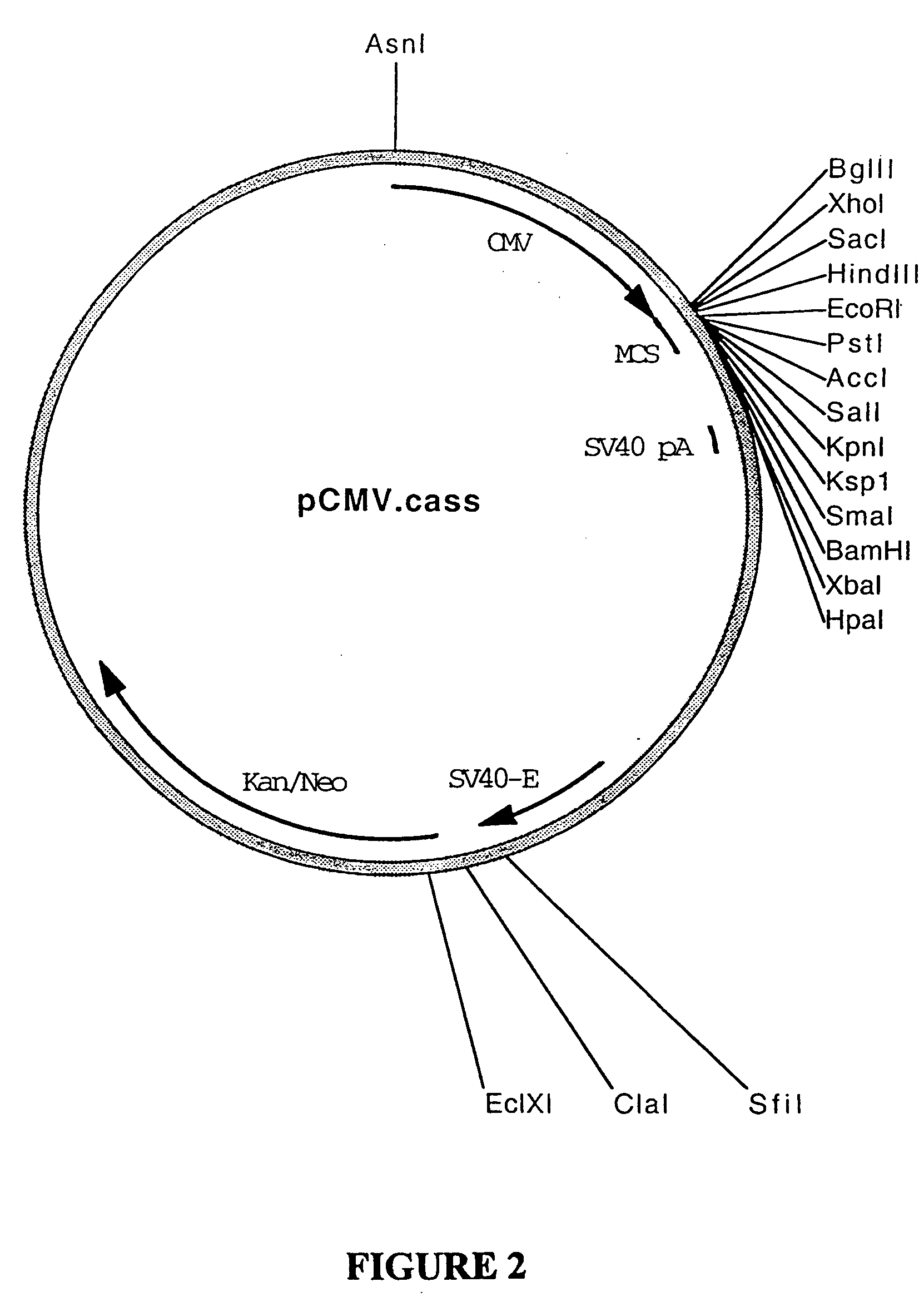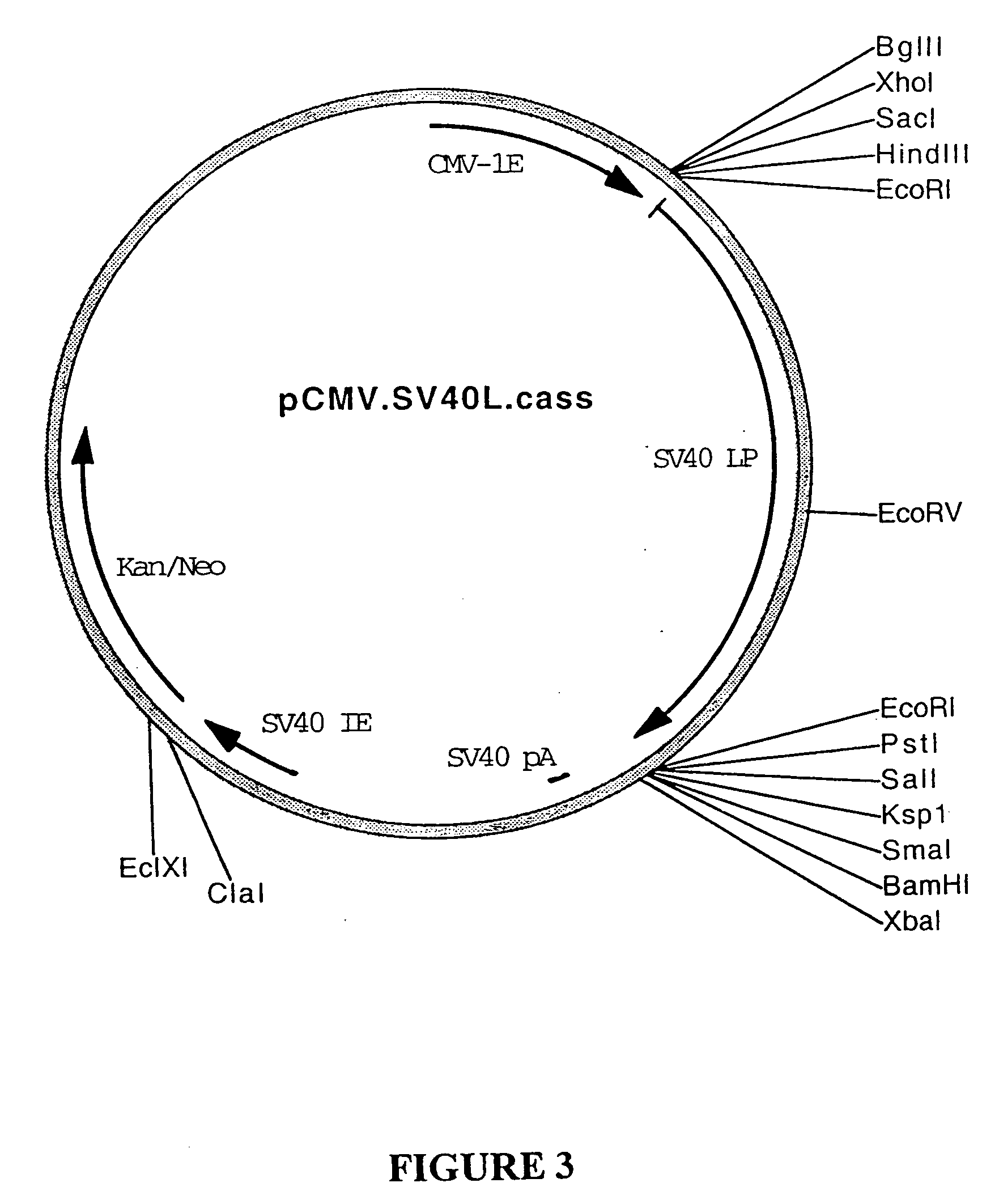Control of gene expression
a gene expression and control technology, applied in the direction of transferases, antibacterial agents, drug compositions, etc., can solve the problems of limited means, less progress in actual manipulation of gene expression to produce novel traits, and intervention may lead to a modulation of the level of eukaryotic gene expression
- Summary
- Abstract
- Description
- Claims
- Application Information
AI Technical Summary
Problems solved by technology
Method used
Image
Examples
example 2
Genetic Constructs Comprising the Porcine .alpha.-1,3-galactosyltransferas-e (Gait) Structural Gene Sequence or Sequences Operably Connected to the CMV Promoter Sequence and / or the SV40L Promoter Sequence
[0285] 1. Commercial Plasmids
[0286] Plasmid pcDNA3
[0287] Plasmid pcDNA3 is commercially available from Invitrogen and comprises the CMV-IE promoter and BGHpA transcription terminator, with multiple cloning sites for the insertion of structural gene sequences there between. The plasmid further comprises the ColE1 and fl origins of replication and neomycin-resistance and ampicillin-resistance genes.
[0288] 2. Intermediate Plasmids
[0289] Plasmid pcDNA3.Galt
[0290] Plasmid pcDNA3.Galt (BresaGen Limited, South Australia, Australia; FIG. 28) is plasmid pcDNA3 (Invitrogen) and comprises the cDNA sequence encoding porcine gene alpha-1,3-galactosyltransferase (Galt) operably under the control of the CMV-IE promoter sequence such that it is capable of being expressed therefrom. To produce plasm...
example 3
Genetic Constructs Comprising PVY Nia Sequences Operably Linked to the 35S Promoter Sequence and / or the SCBV Promoter Sequence
[0319] 1: Binary Vector
[0320] Plasmid pART27
[0321] Plasmid pART27 is a binary vector, specifically designed to be compatible with the pART7 expression cassette. It contains bacterial origins of replication for both E. coli and Agrobacterium tumefaciens, a spectinomycin resistance gene for bacterial selection, left and right T-DNA borders for transfer of DNA from Agrobacterium to plant cells and a kanamycin resistance cassette to permit selection of transformed plant cells. The kanamycin resistance cassette is located between the T-DNA borders, pART27 also contains a unique NotI restriction site which permits cloning of constructs prepared in vectors such as pART7 to be cloned between the T-DNA borders Construction of pART27 is described in Gleave, AP (1992).
[0322] When cloning NotI inserts into this vector, two insert orientations can be obtained. In all the ...
example 6
Inactivation of Virus Gene Expression in Mammals
[0399] Viral immune lines are created by expressing viral sequences in stably transformed cell lines.
[0400] In particular, lytic viruses are used for this approach since cell lysis provides very simple screens and also offer the ability to directly select for potentially rare transformation events which might create viral immunity. Sub-genomic fragments derived from a simple single stranded RNA virus (Bovine enterovirus--BEV) or a complex double stranded DNA virus, Herpes Simplex Virus I (HSV I) are cloned into a suitable vector and expressed in transformed cells. Mammalian cell lines are transformed with genetic constructs designed to express viral sequences driven by the strong cytomegalovirus (CMV-IE) promoter. Sequences utilised include specific viral replicase genes. Random "shotgun" libraries comprising representative viral gene sequences, may also be used and the introduced dispersed nucleic acid molecule, to target the expressi...
PUM
| Property | Measurement | Unit |
|---|---|---|
| pH | aaaaa | aaaaa |
| pH | aaaaa | aaaaa |
| time | aaaaa | aaaaa |
Abstract
Description
Claims
Application Information
 Login to View More
Login to View More - R&D
- Intellectual Property
- Life Sciences
- Materials
- Tech Scout
- Unparalleled Data Quality
- Higher Quality Content
- 60% Fewer Hallucinations
Browse by: Latest US Patents, China's latest patents, Technical Efficacy Thesaurus, Application Domain, Technology Topic, Popular Technical Reports.
© 2025 PatSnap. All rights reserved.Legal|Privacy policy|Modern Slavery Act Transparency Statement|Sitemap|About US| Contact US: help@patsnap.com



